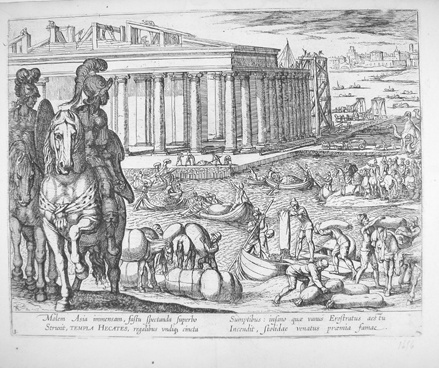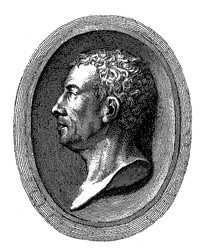Links vorn blicken zwei in gerüstete Reiter zu dem Tempel zurück. Am Ufer werden Boote mit Baustoff beladen und zu der Baustelle transportiert. Am rechten Bildrand eine Gruppe Berittener und Kamele(!); im Hintergrund erstreckt sich die Stadt Ephesos. Bemerkenswert ist, dass der hier im Aufbau gezeigte Artemistempel tatsächlich als antiker ionischer Tempel dargestellt wird.
Bez.:
Molem Asia immensam fastu spectandia superbo / Struxit, TEMPLA HECATES, regalibus undiq cincta // Sumptibus: insano quae vanus Erostratus aestu / Incendit, stolidae venatus praemia famae.
u.l.: 3
en

